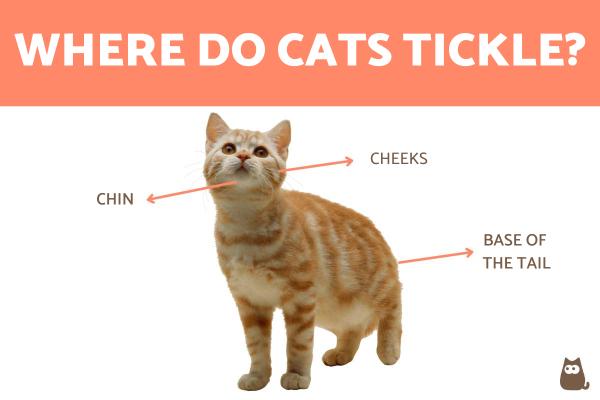
Dogs and cats are much more like us than we think, to the point that they are also ticklish. This is a sensation they feel when we stroke certain areas of their body where a large number of nerve endings are concentrated. However, unlike humans and primates, our pets are not able to feel all types of tickling.
Read the following AnimalWised article to learn if cats are ticklish, how to tickle them, and whether they enjoy it.
Do cats tickle?
Before explaining whether cats are ticklish or not, we must define what this term means. In general terms, the reaction or sensation that occurs when certain parts of the body are rubbed or touched is called tickling. On a physiological level, we can say that tickling is the expression of nerve signals related to the stimulation of touch and pain receptors.
Depending on how pronounced the tickling is, we can speak of two types:
- Knismesis: refers to a slight tickling sensation caused by light rubbing, producing a generally pleasant sensation of itching or tingling. Knismesis is thought to be a reaction of the body to alert to the presence of insects or spiders on the skin.
- Gargalesis: refers to the most energetic tickling that produces involuntary laughter and mainly occurs when higher pressure is applied to certain areas of the body. The reaction also tends to be more intense than in the case of knismesis.
In general, it is believed that all animals are capable of feeling the tickle associated with knismesis. Gargalesis, however, is a unique phenomenon in humans and primates because it is a mechanism associated with play that elicits a response unique to these species, laughter. Cats can, therefore, feel tickling, but only when it is associated with knismesis.
Where do cats tickle?
Having established that our cats are capable of feeling tickling, let us now explain which parts of their body can cause the well-known knismesis.
There are three key places where cats can be tickled: the chin, cheeks, and base of the tail, areas where cats have scent glands that release pheromones.
It is likely that they experience a pleasant tickling sensation when touching these areas, which we can identify using the signals described in the next section.
If you want to learn more about how to pet a cat, read this other article about the best places to pet a cat.

How can you tell if a cat likes to be tickled?
There are a number of signs by which we can tell if our cats like to be tickled, such as:
- Purring: a sound emitted by cats and generally associated with a feeling of well-being, contentment, and pleasure.
- Kneading: a kitten kneads its mother's belly to let her know it is hungry and ready for her milk. Many cats continue kneading into adulthood when they feel calm, content, and sleepy.
- Closing their eyes: Squinted or half-closed eyes are a sign of affection, relaxation, and trust. If a cat looks like it is about to fall asleep, it is relaxed and trusts you.
On the contrary, when tickling is unpleasant, cats tend to put on their ears, tense their muscles, and shake their heads or paws. If we are not aware of the discomfort we are causing them, the animal will most likely move away from us and eventually scratch or bite us to show its discomfort.

How to tickle a cat?
If you want to tickle your cat, you must first choose a time when they are relaxed and receptive to enjoy these touches. Remember that petting, just like any other sign of affection, helps to strengthen the bond with our pets. Therefore, it is important to select the right moments so that the interaction is always positive.
If you think your cat is receptive, you can proceed by gently touching some of the key areas we recommended in the previous sections. At the same time, you need to analyze their body language to determine if your cat enjoys being tickled. If so, you can continue petting that spot or look for other spots that they like as well. You should gradually discover what preferences your cat has when it comes to petting, since every cat has their own tastes.
Areas to avoid
Finally, it is important that you know that there are certain areas where we must avoid petting. Legs, belly, and tail are usually areas where cats dislike petting. They may also dislike other areas, depending on their individual preferences.
For this reason, it is essential to pay attention to the signals that our cat shows when we pet them and avoid tickling the areas that make them tense or uncomfortable. Otherwise, it is likely that they will show their discomfort by giving us a scratch or a small bite.
If you want to read similar articles to Are Cats Ticklish? - How You Can Tell if Your Cat Enjoys Being Tickled, we recommend you visit our Facts about the animal kingdom category.
- Gabbatiss, J. (2017). Why some humans, chimpanzees and rats like to be tickled . BBC Earth.